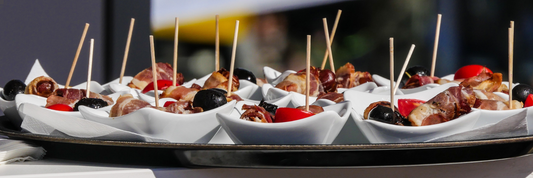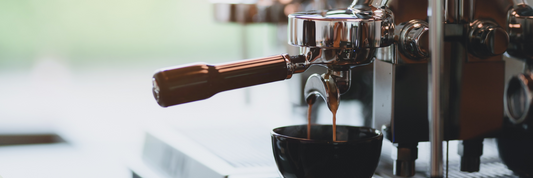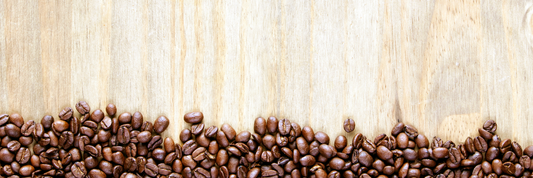Aluminum foil is a common kitchen staple used for cooking, baking, and food storage. However, concerns have been raised about its safety and potential toxicity when exposed to heat or acidic foods. Some studies suggest that aluminum can leach into food, leading to health concerns, while others claim that the amount of aluminum exposure is minimal and not harmful. This article explores whether aluminum foil is toxic, its effects when heated, potential health risks, and safe alternatives for cooking.
Is Aluminum Foil Toxic?
Aluminum foil is generally considered safe when used properly. However, not all situations are entirely risk-free. Temperature, type of food, and cooking time can affect whether aluminum leaches into your food. Many studies have shown that the amount of aluminum absorbed from foil during cooking is minimal, but if used frequently and improperly, it can accumulate in the body and potentially cause health issues.
Certain factors, such as acidic foods (like tomatoes and lemons) or foods with high salt content, can increase the likelihood of aluminum leaching into your food. However, in most cases, the amount of aluminum remains within safe limits for human health. To ensure safety, you should use aluminum foil according to the manufacturer's instructions and avoid cooking at excessively high temperatures or for prolonged periods.
 Is Aluminum Foil Toxic When Heated?
Is Aluminum Foil Toxic When Heated?
How Does Heat Affect Aluminum Foil?
When aluminum foil is heated, especially at high temperatures, small amounts of aluminum can transfer to food. The extent of this leaching depends on:
- Temperature: Higher temperatures increase aluminum migration.
- Type of food: Acidic and salty foods (e.g., tomatoes, citrus, vinegar, soy sauce) accelerate aluminum release.
- Cooking time: The longer food is wrapped in foil and exposed to heat, the higher the chance of leaching.
At What Temperature Does Aluminum Foil Become Toxic?
One of the most common concerns about using aluminum foil is at what temperature does aluminum foil become toxic. Aluminum foil can be safe when used at temperatures below 400-450°F (200-230°C). However, when these temperatures are exceeded, the risk of aluminum leaching into food increases.
Research on Aluminum Leaching
A 2012 study published in the International Journal of Electrochemical Science found that cooking with aluminum foil can result in significantly higher aluminum levels in food, particularly in acidic and spicy dishes. While the levels detected were within international safety limits, frequent and prolonged exposure might be a concern.
To minimize risk, avoid using aluminum foil for cooking at high temperatures for extended periods, especially with acidic or salty foods. Additionally, if possible, use aluminum foil as an outer layer to wrap food, avoiding direct contact with the food itself.
Does the Shiny or Dull Side of Aluminum Foil Pose a Risk?
Some frequently asked questions are which side of aluminum foil is toxic or whether there is a difference between the two sides of aluminum foil—shiny and dull—when used for cooking. The answer is no difference; both sides are safe to use, and neither side is more hazardous than the other.
The shiny and dull sides of aluminum foil are simply the result of the manufacturing process and do not affect the safety of the foil when used in cooking. However, the shiny side reflects heat better, so when using aluminum foil to keep food warm, you might place the shiny side out to optimize heat retention.
Is Aluminum Foil Bad For You?
Dangers Of Cooking With Aluminum Foil
Although aluminum foil is generally considered safe, there are some potential risks when cooking with it.
- Absorption of Aluminum into Food: Aluminum is a metal that can leach into food, especially when in contact with acidic or salty foods. This can increase the aluminum content in the body, which, even in small amounts, can accumulate over time and potentially cause health issues.
- Aluminum Accumulation in the Body: Some studies have linked aluminum accumulation in the body to diseases such as Alzheimer's and bone disorders. While these connections are not definitively proven, it is still advisable to limit excessive exposure to aluminum to protect your health.
 Aluminum Foil Poisoning Symptoms
Aluminum Foil Poisoning Symptoms
While most health risks associated with aluminum exposure develop over the long term, high levels of exposure can be dangerous. Symptoms of aluminum toxicity may include confusion, muscle weakness, bone pain, seizures, and, in children, slowed growth.
Similarly, without proper treatment, lead toxicity can severely impact the lungs, nervous system, digestive system, bones, and other vital organs.
Other Issues When Using Aluminum Foil in the Oven
- Aluminum foil sticking to food: If you bake food for an extended period using aluminum foil, it may stick to the food, with small bits of foil potentially getting stuck to the bottom of the dish. For quick-bake items like cookies, aluminum foil or parchment paper can be used. However, for longer bakes like meringues, parchment paper is recommended.
- Soggy baked potatoes: Aluminum foil can trap moisture, so baked potatoes wrapped in foil may have a soft, moist texture rather than a crisp skin.
- Metallic taste: Acidic foods (like tomatoes, citrus, and vinegar) and salty foods can react with aluminum foil, potentially giving your food a metallic taste. It is best to use unlined baking pans for these types of foods.
Can You Put Aluminum Foil In An Air Fryer?
Can You Put Aluminum Foil In The Oven?
What Can You Use Instead of Aluminum Foil for Cooking?
If you are concerned about using aluminum foil in cooking, there are several safer alternatives:
- Parchment paper: This is a popular and safer alternative to aluminum foil. Parchment paper is aluminum-free and has excellent non-stick properties, making it ideal for baking and cooking at high temperatures.
- Wax paper: You can use wax paper to store leftovers or wrap sandwiches. Wax paper will protect the food from air exposure and is also non-stick.
FAQs About Is Aluminium Foil Safe
Does Cooking With Aluminum Foil Cause Cancer?
Using aluminum foil is safe and does not cause cancer.
Is Aluminum Foil Bad For The Environment?
Aluminum foil is not bad for the environment. It can be recycled and used again, and it decomposes rather quickly. However, what makes foil non-eco-friendly is the amount of aluminum produced and the amount of foil that ends up in landfills.
Conclusion
Aluminum foil is a useful kitchen tool, but it should be used correctly to ensure safety. The potential risks of using aluminum foil in cooking are mainly related to aluminum leaching into food, particularly when cooking at high temperatures or with acidic foods. To protect your health and maximize the benefits of aluminum foil, follow usage guidelines and consider using safer alternatives like parchment paper, non-stick baking sheets, or natural materials. By following these tips, you can cook safely and protect the health of your entire family.
Related Articles:





